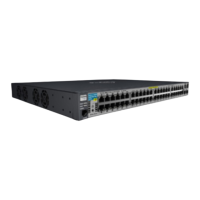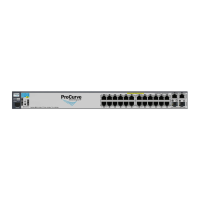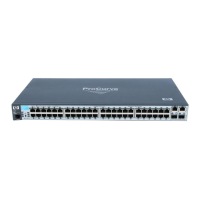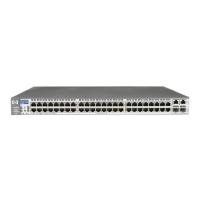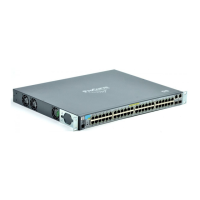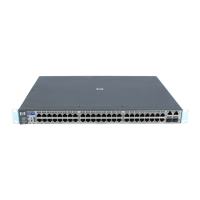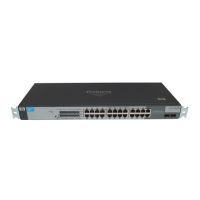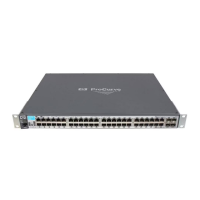IP Routing Features
Configuring Static IP Routes
■ Default network route – This is a specific static route that the routing
switch uses if other routes to the destination are not available. Refer to
“Configuring the Default Route” in the chapter titled “IP Routing Features”
in the Management and Configuration Guide for your switch.
Static Route Types
You can configure the following types of static IP routes:
■ Standard – the static route consists of the destination network address
and network mask, and the IP address of the next-hop gateway.
■ Null (reject) – the static route consists of the destination network
address and network mask, and the reject parameter. Typically, the null
route is configured as a backup route for discarding traffic if the primary
route is unavailable. By default, when IP routing is enabled, a route for
the 127.0.0.0/8 network is created to the null interface. Traffic to this
interface is rejected (dropped). This route is for all traffic to the “loop-
back” network, with the single exception of traffic to the host address of
the switch’s loopback interface (127.0.0.1/32). Figure Figure 7-8. on page
<zBlue>21 illustrates the default Null route entry in the switch’s routing
table.
Static IP Route Parameters
When you configure a static IP route, you must specify the following param-
eters:
■ The IP address and network mask for the route’s destination network.
■ The route’s path, which can be one of the following:
• The IP address of a next-hop gateway
• A “null” interface. In this case the routing switch invokes a “reject”
parameter on a static route entry, which results in the switch dropping
traffic forwarded to the null interface.
The switch automatically assigns a metric of “1” to an IP static route.
Static Route States Follow VLAN (Interface) States
IP static routes remain in the IP route table only so long as the VLAN interface
used by the route is available. If the VLAN becomes unavailable (that is, if all
ports in the VLAN are offline), the software removes the static route from the
IP route table. If the VLAN later becomes available again, the software adds
the route back to the route table.
7-17
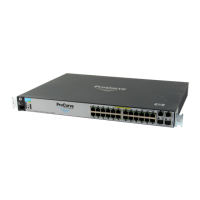
